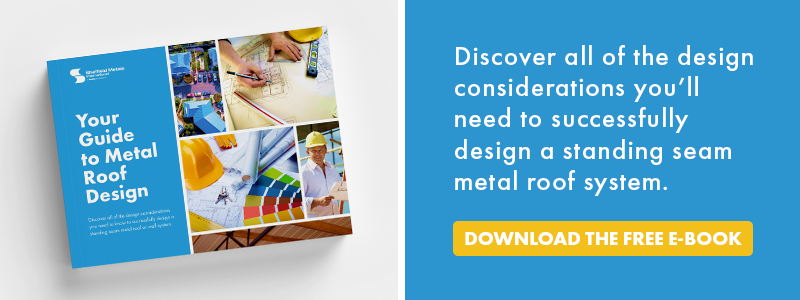Thinking About Using Real Wood Siding? Know These 7 Common Problems
Considering real wood siding? Discover 7 common problems — from rot to maintenance— that could impact your home's look, cost, and durability.
What are some common issues of using real wood siding?
Real wood siding can provide that authentic look home and building owners are looking for. However, wood also comes with its own issues, like the potential for fire, pest infestation, and rot. Because of this, many people are seeking out alternatives, including metal panels that mimic wood siding.
In this article, we’ll look at the most common problems of using real wood siding.
1. Fire Hazards

Wood siding is highly flammable. Unlike fire-resistant materials like metal or brick, wood is naturally combustible and can act as fuel for fire. Even with fire-retardant treatments, wood siding doesn’t offer nearly the amount of protection as non-combustible materials.
In wildfire-prone areas, homes and buildings with wood siding are at greater risk of ignition from flying embers, which can travel long distances and ignite dry wood instantly. Wood siding could potentially lead to the spread of wildfires.
Some areas have even started implementing building codes that discourage the use of real wood siding. In areas with a high threat of wildfires, insurance companies may even deny homeowners coverage due to the risks of the flammability of wood roofs and siding.
Home and building owners can spend thousands replacing their homes due to fires — choosing a fire-resistant siding or a fire-rated material like metal can offer homeowners greater peace of mind and increased protection for their property.

2. Susceptibility to Moisture and Rot
Wood siding absorbs moisture from rain, snow, and humidity, which can lead to swelling of the wood, warping, and mold and mildew. Its porous nature can create aesthetic issues.
Snow and ice-prone areas like Colorado can be especially vulnerable, as the repeating freeze and thaw cycles can lead to prolonged moisture exposure and increase the risk of rot and mold.
3. Pest Infestation

Termites, carpenter ants, and carpenter bees can all be potential problems for wood siding, as they can burrow, create nests, or consume wood. While minor pest issues may be able to be solved with frequent maintenance, serious infestations can lead to lasting damage to the structure and may eventually require full replacements of the siding.
Regions with warm, humid climates, such as Florida or Texas, should be especially weary of pest infestations in wood siding, as termites thrive in these areas.
4. High Maintenance Requirements
One significant issue with real wood siding — and one that turns many homeowners to alternative options, is the high maintenance that is required to keep it looking and operating as it should.
As mentioned in this article, there are many potential problems that come with wood siding, including the threat of termites and rotting. To ensure that your wood siding isn’t compromised by these problems, it’s essential to stay on top of maintenance, check your siding for signs of rot or pests, and schedule frequent inspections conducted by professionals.
Wood siding may need to be stained or repainted to retain its appearance. You’ll likely need to get annual cleanings to remove dirt and mildew, and sealant may need to be replaced to fill in cracks and ensure the wood is protected from UV damage and moisture penetration.
The frequency of repairs will depend on where your home or building is located. These high-maintenance requirements also come with added costs.

5. Expensive Repairs
It can cost anywhere from $7,000 to $23,000 to repair wood siding. The final cost will depend on how widespread the damage is, the type of wood you’re getting replaced, and how much material will be needed. Pine, for example, costs less but isn’t as durable as cedar, which can be more expensive. Different types of wood will offer pros and cons, so it’s important to understand what each type offers before making a decision.
While the installation of wood may be comparable or even cheaper than other materials, in the long run, you might have to pay more for repairs, maintenance, or even full replacements.
6. Fading and Weathering

Aesthetically, wood siding may also begin to weather and fade faster than other materials. Sunlight can begin to break down pigments in the wood, gradually causing it to lose its initial color, leading to a washed-out appearance. Likewise, small cracks may start to appear on its surface.
Other materials like metal can be paired with high-quality paint systems like polyvinylidene chloride (PVDF), which can resist color fading for decades — all while giving the appearance of real wood. Wood-look metal has come a long way in recent years and in some cases can be indistinguishable from real wood when viewed at a distance, as the manufacturing process creates detailed patterns.
7. Limited Durability

Ultimately, wood siding will not offer the level of durability that other materials — such as metal that mimics the look of real wood — provides. How durable your wood siding is and how long it lasts will in part depend on the type of wood you choose, the region your home or building is in, and how well you keep up with maintenance to defend against common issues like pests and rot. Severe weather or pests can significantly shorten the lifespan of wood.
Looking for More Information on What Materials to Use on Your Project?
There are problems that come with any type of material, and in some cases, authentic wood siding is the right choice for many home and building owners. Real wood siding offers a range of different choices, as you choose from materials like pine, cedar, and Douglas fir. What material you choose will be based on your preferences and what drawbacks you’re willing to live with to fulfill your vision of the project.
Some may be looking for an alternative to wood that offers fire resistance, durability, and color retention while still providing them with that wood look. Metal that looks like wood is a popular choice, as the technology of wood grain coatings is becoming increasingly impressive. Metal is also 100% recyclable and comes in various shades of wood grain.
Sheffield Metals will be coming out with a new wood grain product soon, with a material that mimics the look of real wood while providing all the advantages of metal. Stay up to date with Sheffield Metals to know when the new product line is released.
Until then, feel free to check out our additional content in the Metal Roofing Learning Center:
Real Wood vs Metal That Looks Like Wood: What’s Right for Your Project? – Sheffield Metals
Metal Roofing Materials: Galvalume® vs. Aluminum vs. Specialty Metals





